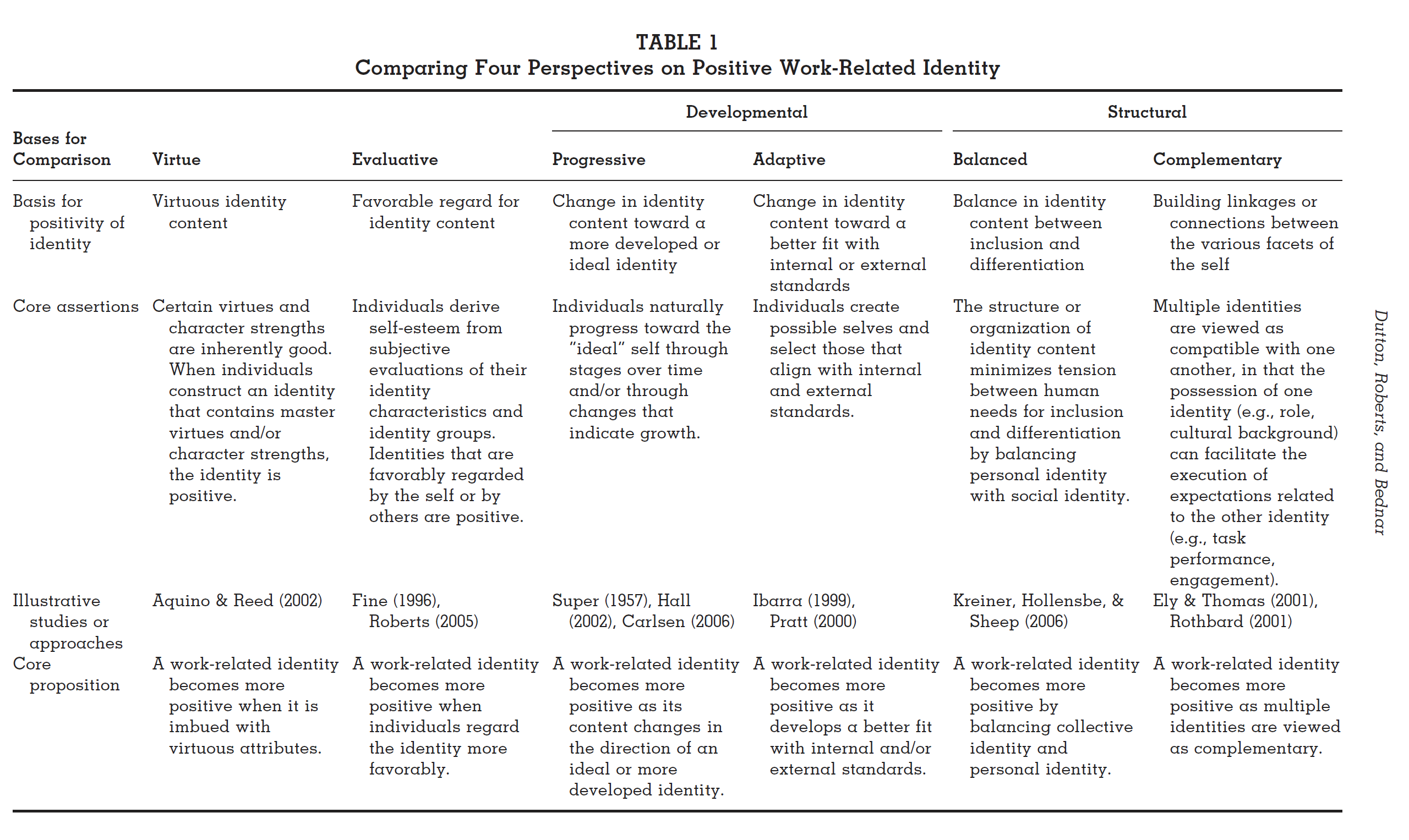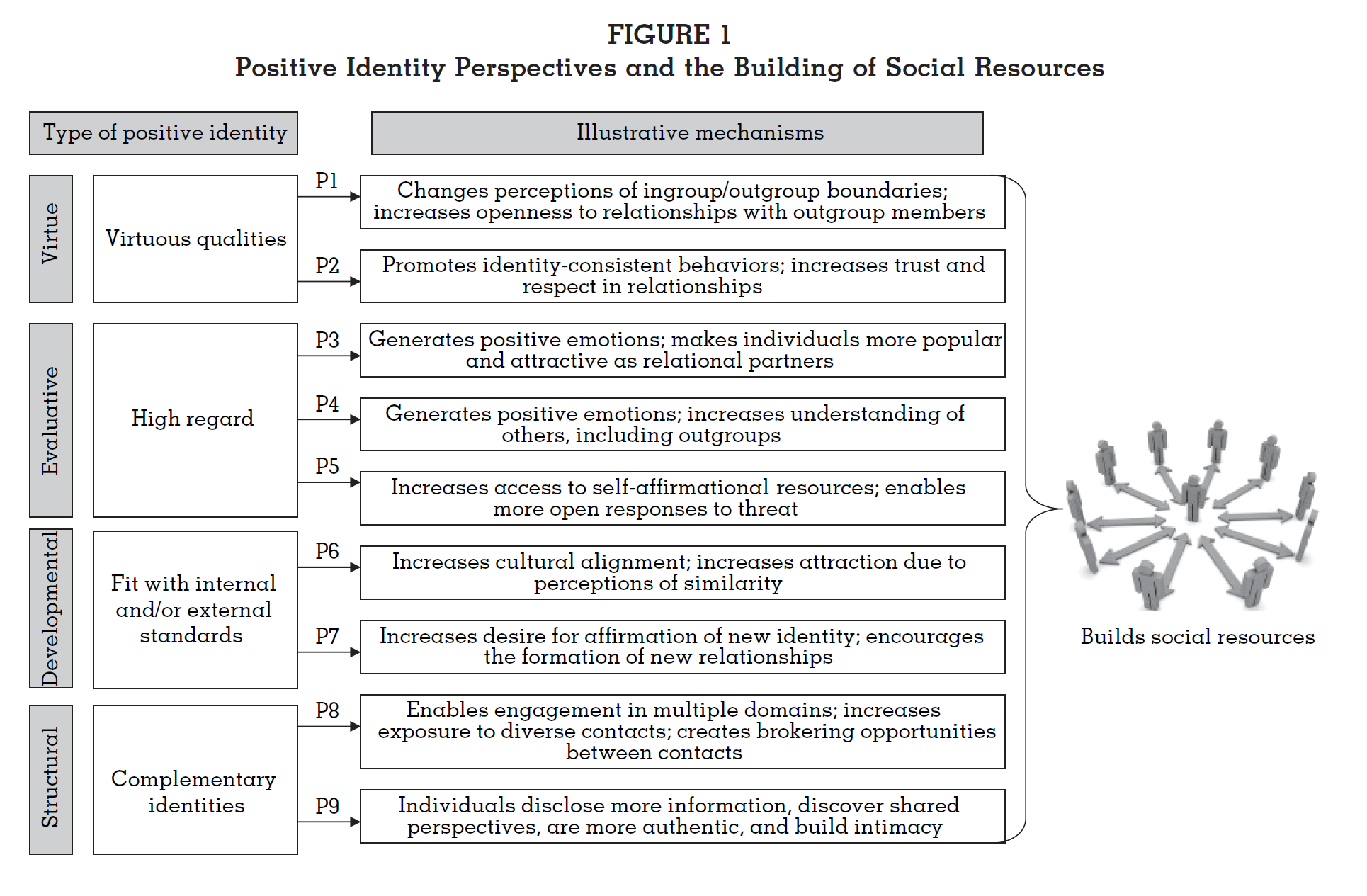Dutton 2010 - Pathways for Positive Identity Construction at Work - Four Types of Positive Identity and the Building of Social Resources
Dutton, J. E., Roberts, L. M., & Bednar, J. (2010). Pathways for positive identity construction at work: Four types of positive identity and the building of social resources. Academy of management review, 35(2), 265-293.
Summary
Work-related identity is defined here as “the meaning that individuals attach to themselves” in the context of work. Positive work identities allow individuals to build social resources (“number, diversity, and quality of relationships that an individual has at work”). These social resources facilitate acquisition of other types of resources, like “information, access, [and] trust.” All these resources together better enable a person to deal with stress and challenges.
Four types of positive work-related identities are described. The virtuous perspective states that positivity is enhanced to the extent that the job “is infused with virtuous qualities,” defined as characteristics that are inherently good or bad. Examples would include courage shown by firefighters or compassion shown by doctors. The evaluative perspective posits that positivity is enhanced to the degree that the individual (or others) regard the job highly. In this way, the construct seems close to status, but also includes self-esteem and self-efficacy. Examples would include a master carpenter or a cook at a well-regarded restaurant. The developmental perspective deals with the temporal change in identity. Progressive identity development proposes that positivity is enhanced through “progression toward a higher-order stage of development,” such as progression towards full professorship. Adaptive identity development states that individuals will systematically alter identity to obtain better fit, which results in heightened positivity. An example would be the adoption of organizational norms as a person changes jobs. The structural perspective is concerned with the way multiple (or multifaceted) identities are organized. Balanced identity structure posits that balance between individual (divergent or distinct) identity and social (convergent or similar) identity results in more positivity. Complementary identity structure shows that positivity increases when multiple identities are complementary. For example, when a person’s hobby suddenly becomes relevant and useful (“This client likes to fly fish. Who here fly fishes?”) in their job, positivity would grow.
The specific ways that these different positive identities develop social resources are detailed in the diagram below. Virtuous work identities lead to cultivation of virtues (including openness to others), which people like. High regard jobs increase positive emotions and self-esteem, which people like. Developmental jobs move people towards similarity, which people like. Structurally positive identities allow individuals to form relationships in multiple domains (which strengthens networks) and allows individuals to be accepted holistically (which builds self-esteem and positive emotions).
Application
Different positions will likely be a better fit for different positive identities. Identifying (and cultivating) the positive identity that might be the best fit for an individual’s position (whether your own or someone else’s) should result in the positive outcomes detailed previously.

